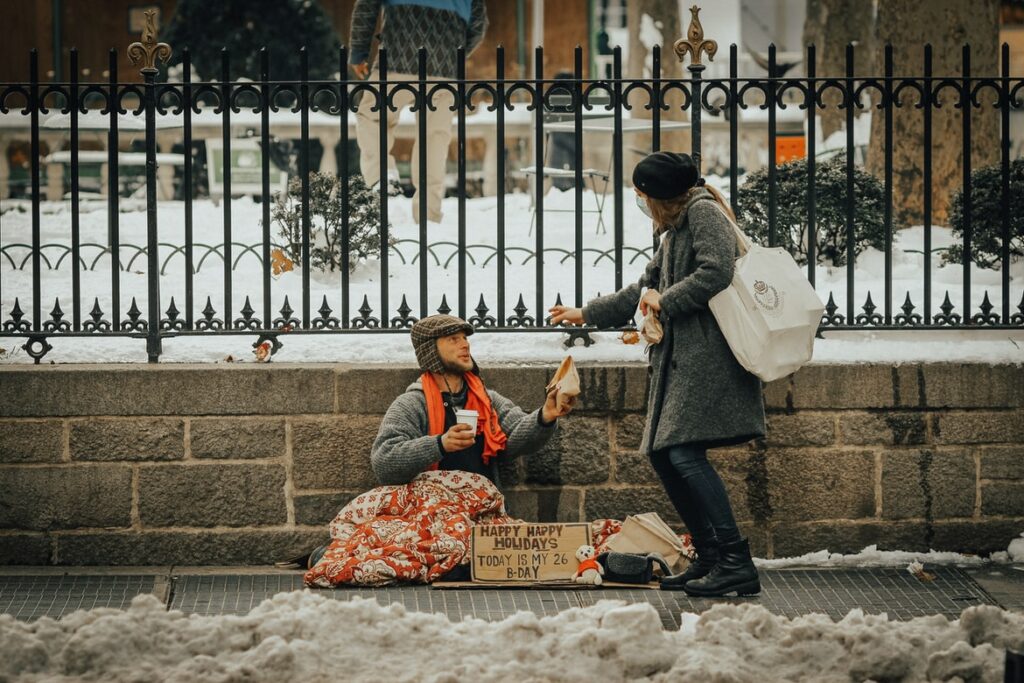What drives the spirit of the season and spread of goodwill during the holidays? There’s an answer backed by science.
By Ashley Goodfellow Craig, YFile deputy editor
There’s a collective feeling of positive energy around the holidays, one that inspires people to look outward and be more joyful, generous and even forgiving.
It’s a time when we are encouraged to help others and be charitable, and when individuals and organizations look to their community for support, whether it be time, money, goods or services.
These acts of kindness are embedded in the spirit of the season – it’s what holiday cheer, or Christmas spirit, is born from – and there’s something contagious about the mood of it all. But why is that?

York University Professor Myriam Mongrain says that there’s science to explain why kindness and compassion can be “contagious” – especially around the holidays.
Mongrain is a clinical psychologist who studies the science of compassionate actions and teaches in the Faculty of Health’s Department of Psychology.
When people are being kind – genuinely kind and transcending their own self interest – it leads to the production of “feel-good” hormones, like oxytocin and dopamine, she says. “When you are helping out of that inner instinct, and there is a genuine self-transcendence, when that happens there is something pretty magical going on physiologically.”
In the chapter “Compassion, happiness and self-esteem” in the 2014 published Encyclopedia of Quality of Life and Well-Being Research, Mongrain states: “Performing small acts of kindness towards people we know, even towards strangers, elevates our mood.”
Research has found this type of compassion and kindness leads to the production of oxytocin, otherwise known as the “bonding” hormone that helps mothers bond with their newborns after birth. It’s a feel-good, let’s-hug-each-other kind of hormone, says Mongrain. Increased levels of oxytocin boosts feelings of calm, trust, empathy and love.
There’s also a release of dopamine tied to thoughtful, selfless acts, which is a hormone related to our reward neurotransmitters, explains Mongrain.
And then there’s the autonomic nervous system: the sympathetic, which triggers a fight-or-flight response during distress or perceived danger; and the parasympathetic, which works to bring the body back to a state of calm.
“There’s a very interesting interplay there, in terms of the sympathetic and parasympathetic nervous system,” she explains.
What happens is, these systems orchestrate around helping someone, which is especially true in situations where a person is helping someone in distress: on one hand the person offering help is “worked up” from witnessing that distress, which in turns causes them to also feel distress. This is the role of the sympathetic nervous system. However, the parasympathetic nervous system will kick in and work to calm those feelings enough so a person can offer help.
“People who are good at helping are able to establish that balance between alertness and calm (this is called vagal flexibility) and so there’s that happening peripherally throughout the body, which makes you very well equipped to help,” says Mongrain.
When a person is showing kindness or compassion, and they are transcending their own self, they benefit from the effects of the feel-good hormones. Modelling those behaviours and creating those feelings result in a domino effect, where acts of kindness are spread to others.

A study in Science Daily from 2010 says, “when people benefit from kindness they ‘pay it forward’ by helping others who were not originally involved, and this creates a cascade of cooperation that influences dozens more in a social network.”
Mongrain agrees. “You see a beneficial effect on the other, the other person feels better, that makes you happy and everybody wins.”
Add in the glow of the holiday season – the lights go up, the gifts are bought and exchanged, families come together – and it delivers all the elements we find rewarding as human beings. The experience of feeling good from being kind or compassionate can have a trickle-down effect; humans innately want to imitate those around them.
“It’s very powerful if you extend it to the principle of love, the principle of extending that care towards others,” says Mongrain. “It’s especially good for human beings.”
However, Mongrain says to reap the benefits of showing kindness and compassion, presence is key. You must be able to notice and be aware of what is happening around you. It’s also important, she says, to understand why you are being kind. Are there conditions attached – for example, if the act or service you provide is done out of expectation – or if the goal is to gain something from it? These don’t represent true acts of compassion or kindness.
Mongrain says an act of kindness doesn’t have to be a grand gesture, and small, simple gestures can also trigger the benefits, and spark a “pay-it-forward” type of kindness.
“I think the simplest means we have available during this pandemic is making eye contact and showing appreciation using our eyes,” says Mongrain. “Giving a stranger a compliment is also a small, creative way of making a difference. It has everything to do with connection, and everything to do with you starting with that intention with just making sure the other knows you have a good thought towards them, that you appreciate them, that they are not invisible.”


